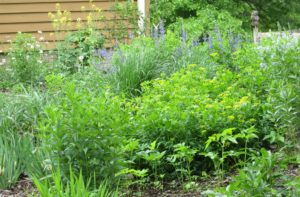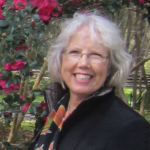Part of the fun of being a gardener is sharing with others. Theres no better feeling than having an abundant harvest and then sharing your produce with friends, family, and members of your community. Or, when you have the opportunity to cut a fresh bouquet of flowers from your garden to gift to someone. A month ago, we reached out to some of our favorite gardening personalities and influencers to learn from them and hear about what they love to grow and to ask what they could share with the gardening community.
Today we are sharing influencer favorites in no particular order from: Emma Raven, Christy Wilhelmi, Judy Nauseef, Pam Beck, Brie Gluvna, Kimberly Butler, Barry Glick, and Bren Haas. Enjoy!
Gardening Influencers
Emma Raven – Misfit Gardening

Growing beans and winter squashes are my absolute favorites. I love the diversity in these crops; the colors, shapes, sizes, taste and textures are amazing!
To maximize productivity in a small garden space, I trellis squashes and grow smaller fruited varieties that are still delicious to eat. Varieties like Buttercup, Red Kuri and Winter Luxury Pie Pumpkin all grow very well over a trellis and it’s easier to see the fruits to pick!
Pole beans are also good for having a bigger yield in their footprint in the soil space. Trellising means you can squeeze in more plants into your garden and you can pick the beans a little easier too. I love to grow unusual heirlooms for beans and some fond favorites from the UK like Scarlet runner beans, they always remind me of home and my grandparents’ garden.
To help these plants grow, I always add compost to the garden bed that they will be growing in and I add handfuls of compost around the base of the plants throughout the growing season, especially the winter squashes.
Emma interviewed Garden Savvy’s co-founder George Nagrodsky in Southern Gardening Strategies!
Images owned and courtesy of Emma Raven


Christy Wilhelmi – Gardenerd

“My favorite vegetable to grow would have to be divided between cool season and warm/hot season crops, because while here in SoCal we’re already planting the latter, many parts of the country are focused on cool season crops. Kale is, hands down, my favorite cool season crop to grow. I plant 14 different varieties each season and I am particularly fond of any variety with purple leaves or stems. For a hot season favorite, I’m a sucker for winter squash. Delicata, butternut, and pumpkins (oil seed and “naked” pumpkins are fun to experiment with) are always in my garden.”
Check out Christy’s new book! – https://gardenerd.com/mini-fruit-garden/
Images owned and courtesy of Christy Wilhelmi


Judy Nauseef – JudyNauseef.com

“I first bought false blue indigo, Baptisia australis, because of the color. But I have come to love the plant, an early-blooming native, for many reasons. Foremost, it stays in place, reappearing every year in May to June. I use it as an anchor plant in almost every perennial border I design as it grows to 3 to 4 feet high and wide and has the presence of a small shrub when mature. I surround them (it is possible to use just one) with other shorter plants with bright green spring foliage. False blue indigo tends to be spindly in the pot at the nursery, so don’t let that dissuade you from purchasing the plant. This native adapts to a range of soils and even tolerates some shade as well as drought. Use in zone 3 to 9 gardens. Yellow and dusty blue varieties are available although in my garden are less vigorous. The white prairie variety grows well in native gardens.”
Images owned and courtesy of Judy Nauseef


Pam Beck – PamBeckGardens

“I love all plants, but there is a special place in my heart for Japanese maples. They vary in size from woodland forest understory trees to delicate potted bonsai creating a four-season focal point in just about any type of garden. There are Japanese maples that grow upright, including some that are tightly fastigiate, however most have the desirable twisting and turning branches that we identify with these plants, layering down through the garden to very sculptural spreading and weeping forms. Best of all, Japanese maples are clothed with various leaf shapes, textures, and patterns in an astonishing range of colors from spring to fall.
My tip for success with Japanese maples is to purchase them small enough to pot up, then grow them for several years in a weather-resistant decorative container so that you can evaluate how much light your tree can tolerate for the best results. It is much easier to move your specimen tree around the garden in a pot than with a shovel. Once you are happy with your chosen location and the look of your tree in the landscape, plant it in good garden soil with excellent drainage, sited in partial shade in the hotter zones of the South to full sun in cooler and higher elevations.”
Images owned and courtesy of Pam Beck


Brie Gluvna – Brie Grows: Practical Gardening Advice

“Tomatoes are the ultimate taste of summer, and provide a serious challenge for me as a home gardener living in the southeast US. For more than a decade I have been obsessed with growing as many heirloom tomato varieties as I can fit into my foodscape, and this year I have 45 different cultivars growing from seed! Despite their “high maintenance” needs, growing heirloom tomatoes and sharing the fruits of my labor with neighbors, friends, and family brings me such much joy each year. Tomatoes always motivate me to look forward to the season to come!”
Kimberly Butler – Black Homesteader

“My favorite thing to grow has been parsley. I grow mostly vegetables and flowers, but I think this herb is definitely my favorite to grow. I cook quite a bit, and having fresh parsley on hand is a great addition to so many recipes. Parsley is also rather easy to grow, as I have had my plants for years at this point. It can grow in containers, or in a raised bed, so it’s super versatile. I grow a curly and flat-leaf variety. It’s a biennial, but for me, in Florida (zone 9b) I have found that it can grow all the time if I move it inside during the warmer months.
Some tips on how to grow would be to check first when you can grow it, for me, it’s in the cooler months. After checking, you can plant in a container and add soil amendments every month or so. If it starts to bolt, you can save the seeds, and grow again. Potted plants are readily available or you can choose to grow them from seed. The seeds can be tricky, taking 7 to 12 days to germinate. Soaking them in water overnight before planting can improve your success. Sow the seeds shallowly and thin seedlings to 6 inches apart. Keep the soil moist for best results and be sure to carefully weed. Most gardeners will find that only a few parsley plants are needed to fulfill their culinary needs. You can remove a few leaves at a time for continuous harvesting or harvest a whole bunch at once. Parsley leaves are most commonly used fresh, but if dried rapidly, there flavor and color can be preserved.”
Image owned and courtesy of Kimberly Butler

Barry Glick – Sunshine Farms and Gardens

“If there are two things I love more than anything else, its crossing and hybridizing Lenten Roses aka hellebores! I have over 6 acres of hellebores in West Virginia and I have been living in the same place for over 49 years, even with the same phone number, how many people can say that?!
Finding new ways to propagate and see how plant seeds react and grow while creating a new hybrid is the best part about gardening. There’s nothing more exciting than patiently waiting to see the results of your hard work.
I love to lecture, travel, and talk about plants, and when I got started, I learned so much from gardening books. Books are an excellent resource and many of which are written by professors or professionals in the industry who truly love gardening. Most people assume authors are intimidating, but they’re not. Authors love to talk about what interests them most, and in this case, its plants! I used to call the authors of my favorite horticultural books repeatedly to learn directly from the source – we would talk for hours about native plants!
If you’re looking for serious reading material, find a book on horticulture exclusive to your state! For me, I use Flora of West Virginia!”
Also, check out my interview here on Garden Savvy! Barry Glick Interview
Images owned and courtesy of Barry Glick


Bren Haas – BrenHaas.com

“My favorite plant is the Dahlia. One of the my favorite plants to grow is the Dahlia. It is amazing to take a some what ugly looking ‘tuber’ (the seed) and watch it grow into something magical. One has to feel sorry for the poor plant in early spring at garden centers. Most customers or future growers have no idea how magnificent this plant will get in the months to come. My tip to fellow growers is to give a dahlia tuber a try! Start the tuber in a loose mix soil in late spring indoor or your greenhouse. Once all danger of frost is gone find a sunny location in your garden that has plenty of space to let it shine!”
See Bren’s interview on Garden Savvy here! Bren Haas Interview
Image owned and courtesy of Bren Haas












